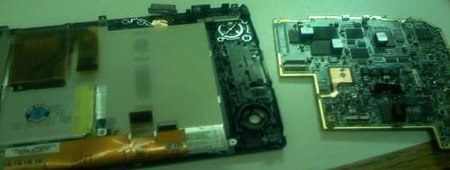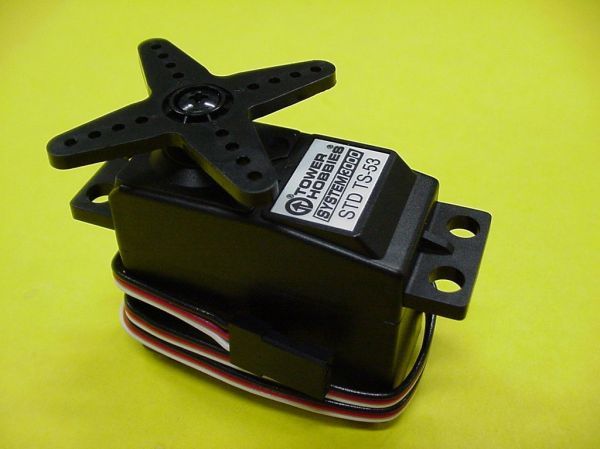
[blakebevin]’s sister shattered the screen on his Amazon Kindle, so he decided to try replacing it with the screen from a Sony Reader. He disassembled the Sony Reader and used a Dremel to mill down most of the aluminum tabs on the E Ink screen. The screen plugs into the same harness as the original Kindle screen the only problem is fit. The new screen interferes with some of the button movement and without trimming the case will bulge a little. Performance wise the screen ghosts on page turn and [blakebevin] assumes this is due to older technology. We’d hope to never have to do this, but it’s good to know the transplant option is there and not very difficult.
instructables43 Articles
Scratch Built Jog Wheel

[whatsisface] sent in his scratch built clone of a Griffin PowerMate. The PowerMate… is just a big knob, so it’s easy to see why more than one person has attempted this. [whatsisface] was inspired by a bit-tech post that did nearly the same thing, only they used the head out of a VCR for the knob. All the other components, like the optical encoder, are salvaged from a mouse, which we talked about in our scavenging How-To. He used a RC car tire for the actual knob. While we’re sure it works great in dirt, we’d probably go with the weight and inertia of the VCR head instead. Have a look at the video below to see the knob being used with the Volumouse software.
Make A Stretchy Fabric USB Cable

If you’ve been puzzled over a discreet, durable way to sew wiring into your clothing, then puzzle no more: [Plusea] has put together a writeup detailing how to make a USB cable partly out of stretchy cotton fabric. Although the design as detailed doesn’t give much practical use for the invention, we can think of several very effective ways of exploiting this toy. Imagine, for example, placing a USB battery pack into one pocket of a jacket, a portable digital audio recorder in the other, and a lavalier microphone in the lining, thus enabling dozens of hours of covert audio surveillance.
Homemade Tube Screamer Clone

[jonboytang] documented his construction of a clone of the famous Tube Screamer overdrive pedal from a set of plans found at tonepad. The tonepad site says you can use the plans to build either a TS-9 or a TS-808, both of which have been classic staples in every guitar player’s setup since the 70s. Although the old parts are no longer available, these new variants still have a really nice sound.
This project is really just a look into [jonboytang]’s etching and enclosure building process, but it may be useful for someone. The build and the circuit look really simple so this would be a great project for guitar players looking to learn how to etch their own PCBs. If you need more information on etching, we would suggest starting out by reading our How-To on etching single sided PCBs. If you are lazy and would rather spend a little money, check out tonepad’s online store. They have a board for this project and many others.
Miniature Balancing Robot
It might not be as elegant or technologically-advanced as a Segway or a motorized unicycle, but this easily constructed 2-wheeled robot might be a fun project for a free afternoon. The heart of the balancing mechanism is an SPDT switch with a button cell attached that reverses the motor when the robot begins to tip in one direction. It’s not controllable and it tends to fall over quite a bit, but it’s a good starting point and could be refined by lowering the center of gravity or figuring out a simple way to change the motor speed based on how far the robot has tipped over. There are no accelerometers or tilt switches so the components could be sourced from a parts bin, and its simple design definitely leaves a lot of room for improvement.
RC Duck Decoys
Here’s something for those of you who always wanted your projects to attract more shotgun blasts. [courtney] built two RC duck decoys. The decoys were only $10 to begin with and the RC submarines were an additional $20 at RadioShack. The construction is fairly clever, using a heat gun to conform the duck body to the submarine. We think the most surprising bit is that this has been done many times over: RC duck with rocket launcher, RC duck cam, and someone is producing commercial ones. Whatever you end up putting in your remotely operated duck, we’ll be sure to include it in our next movie plot threat entry.
Modifying A Servo For Continuous Rotation
[robomaniac] shows us how to modify a standard servo to allow continuous rotation. This is a classic robotics hack and has been around for a while, but we really like the way he put this together. Although you may need some soldering and desoldering tools to open the servo up, the hack is a physical one. All you really need to do is cut off a plastic tab on one of the gears. If you want to see an example of a bot you can build with one of these CR servos, he just posted this one motor walker.












